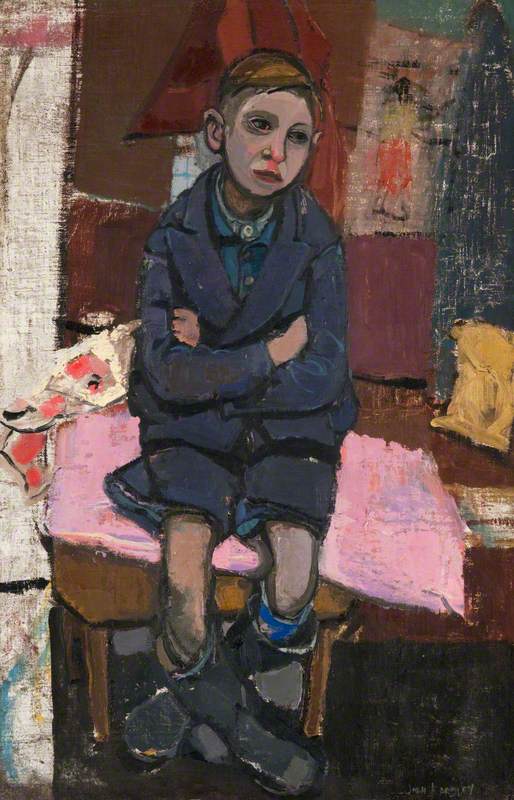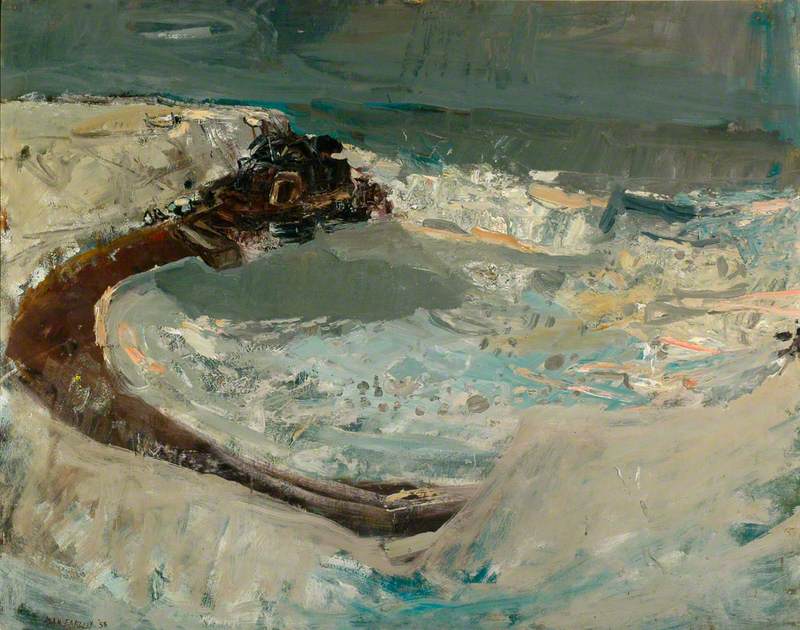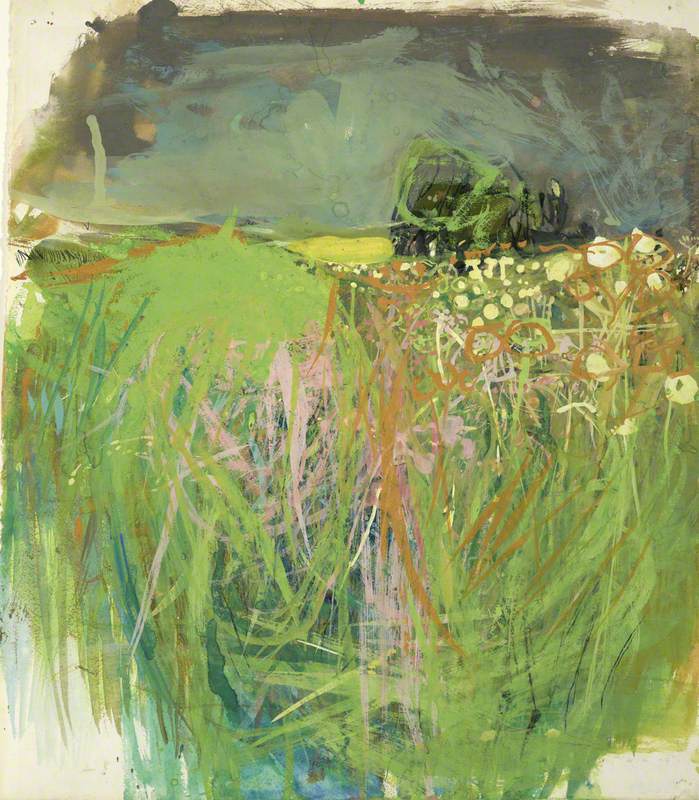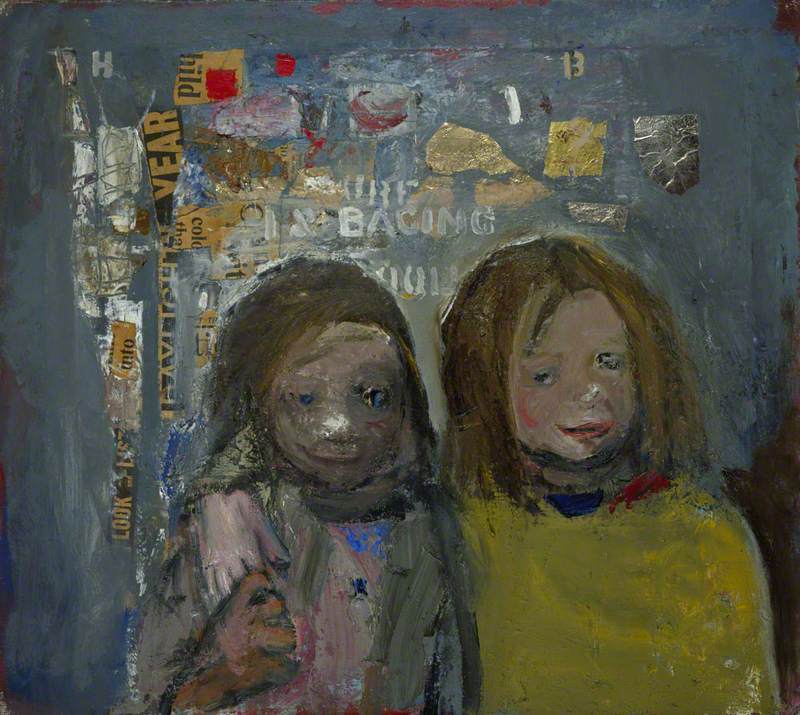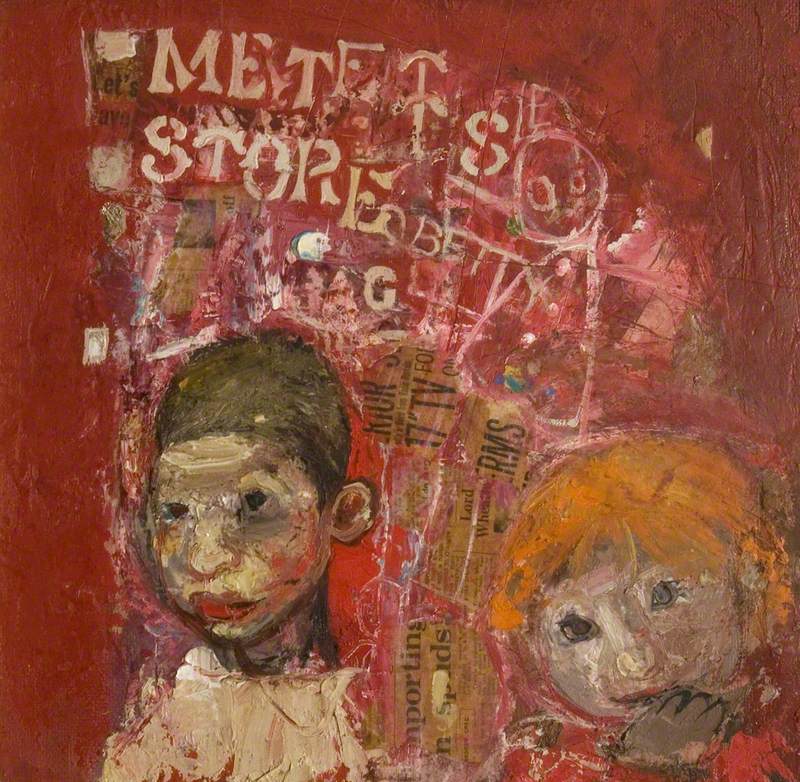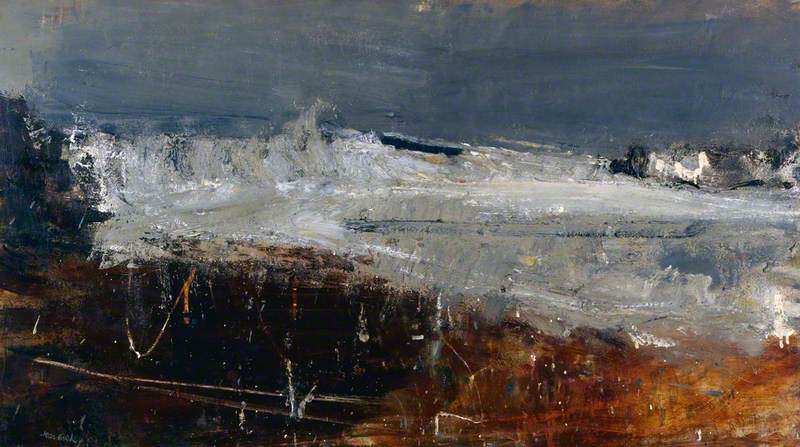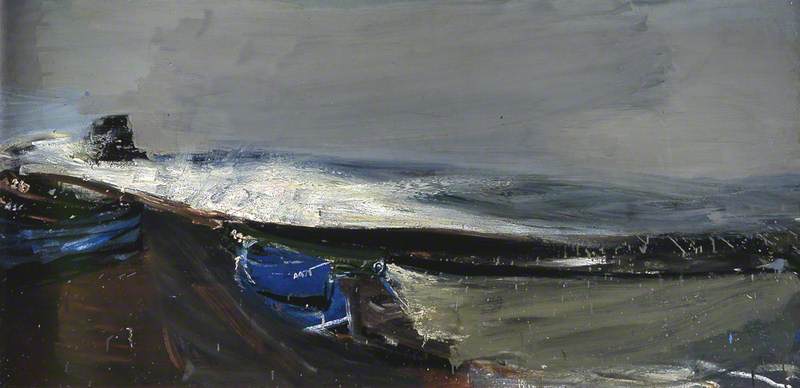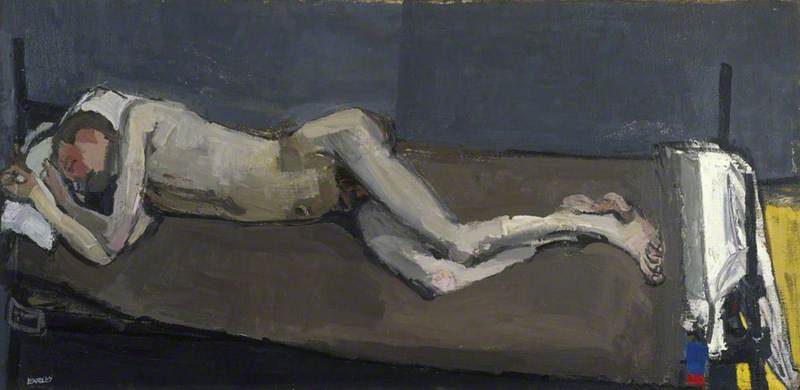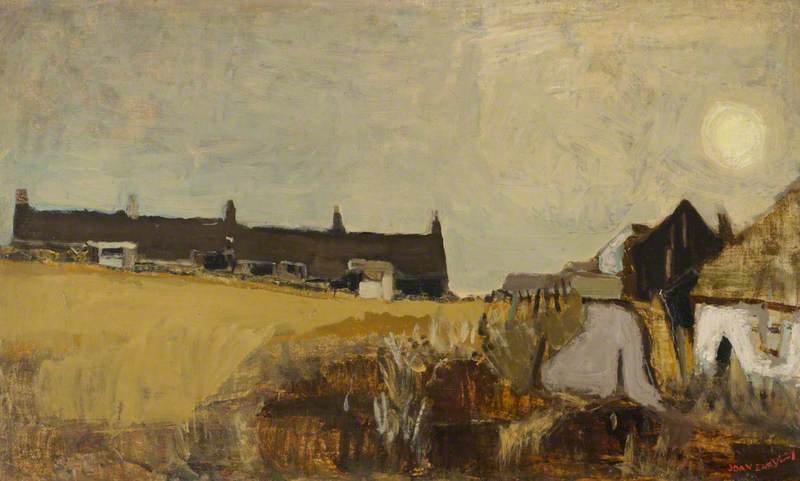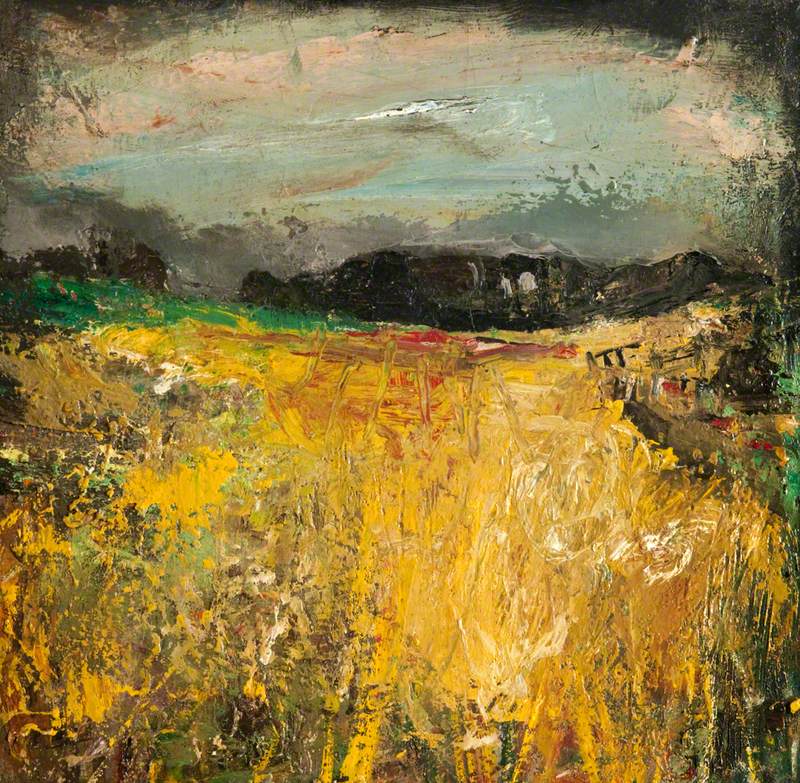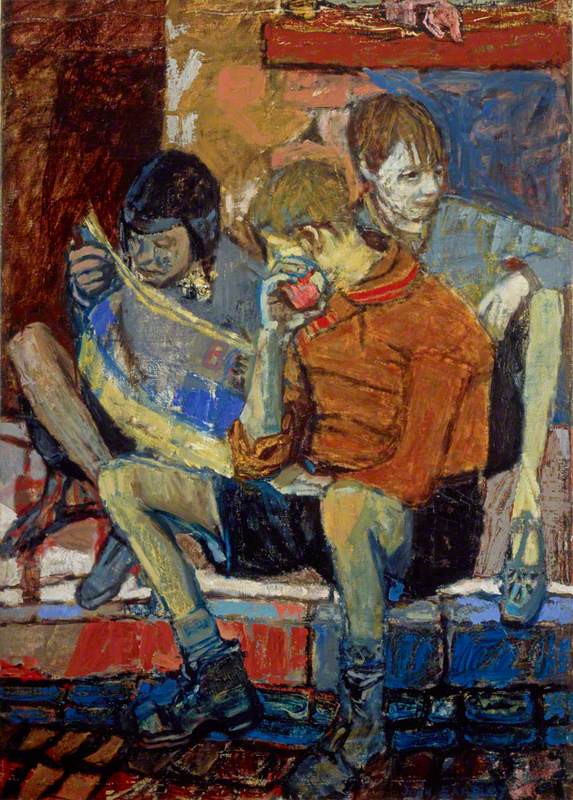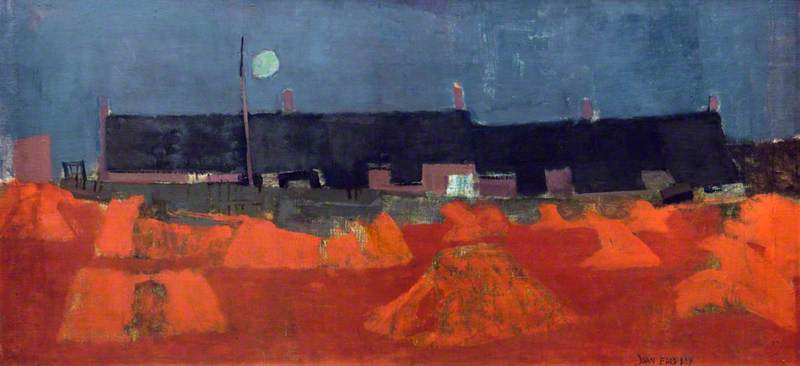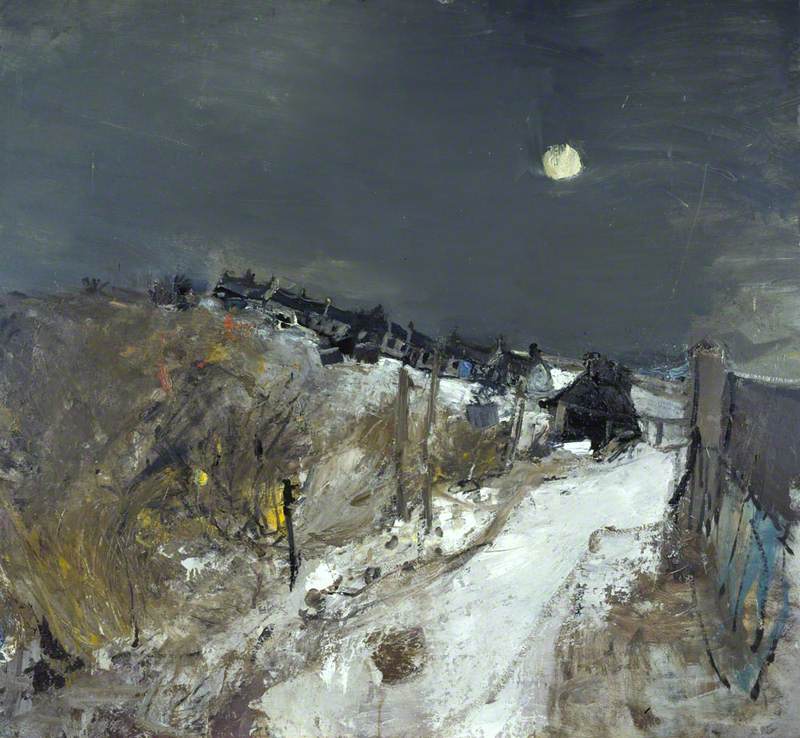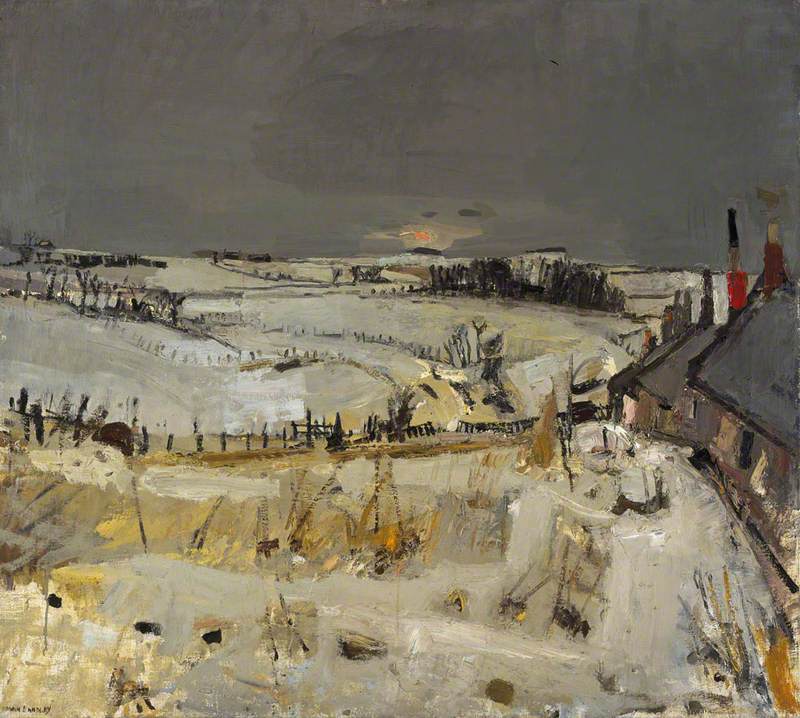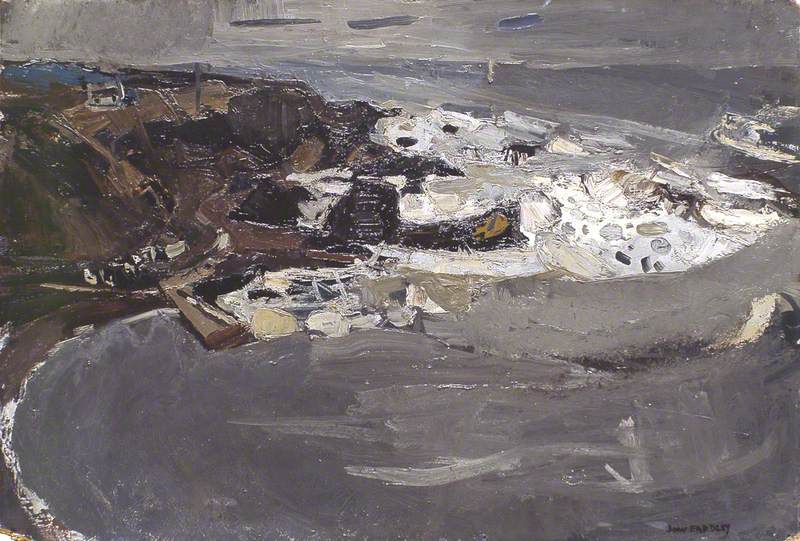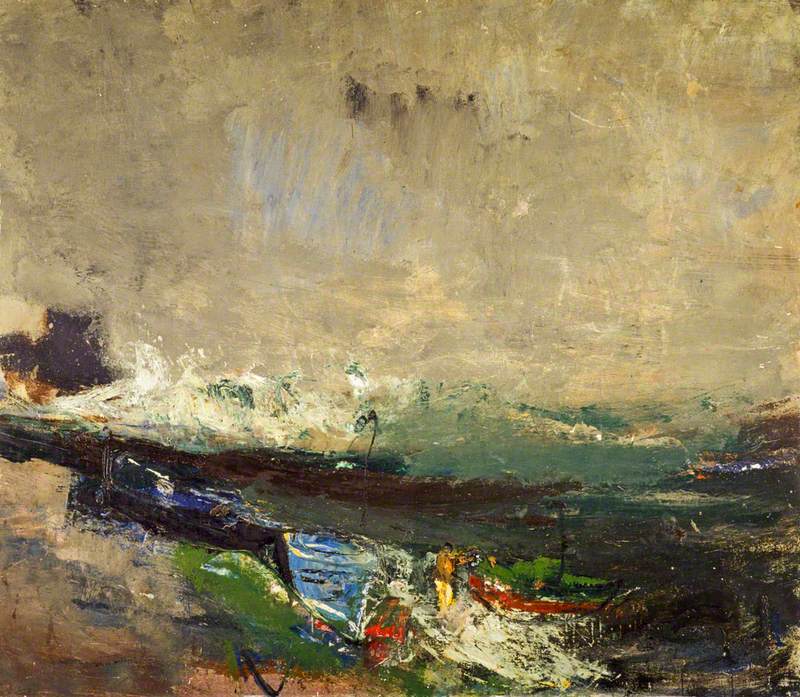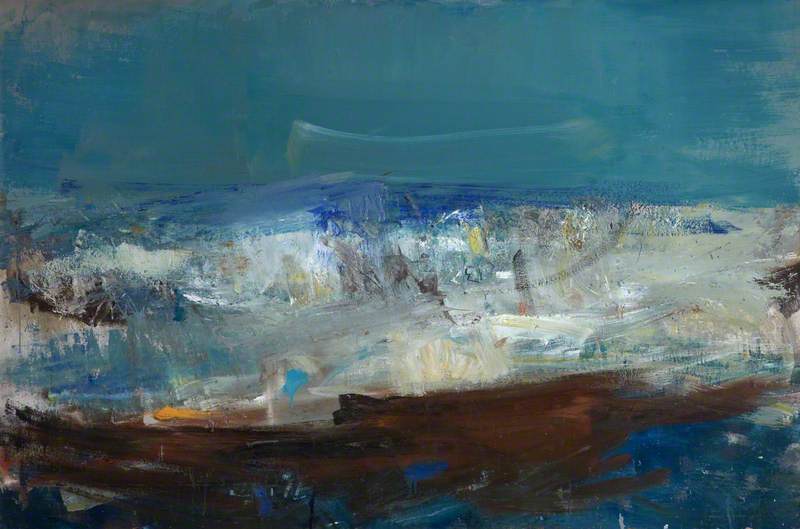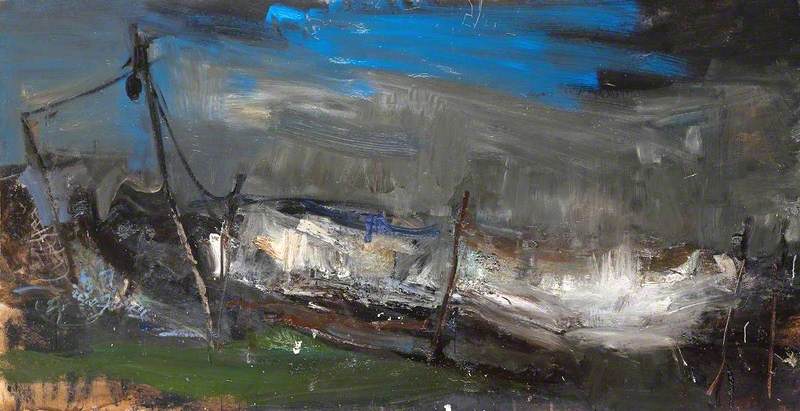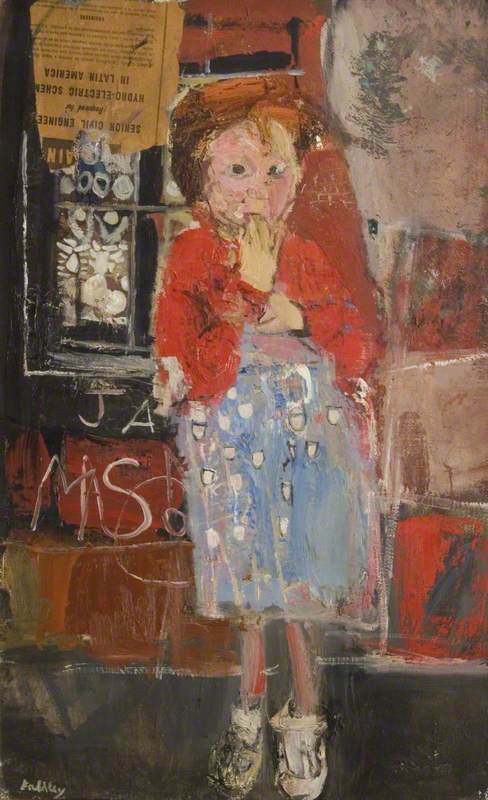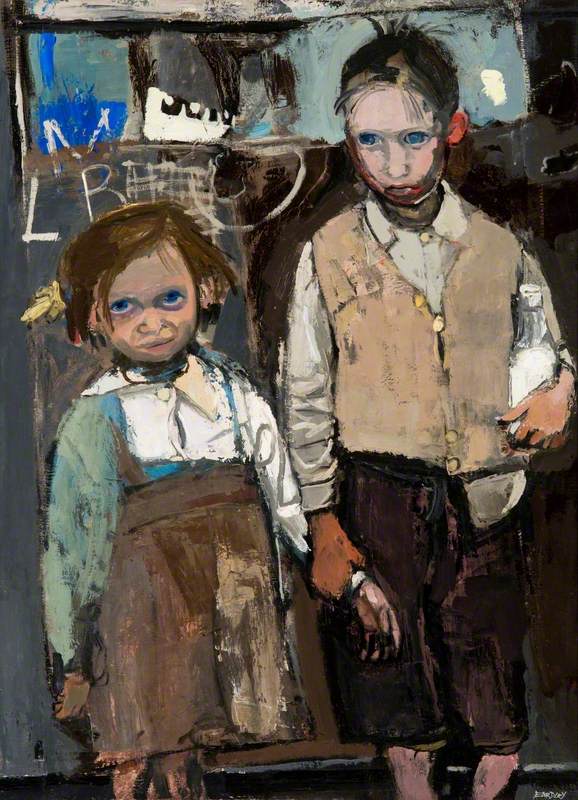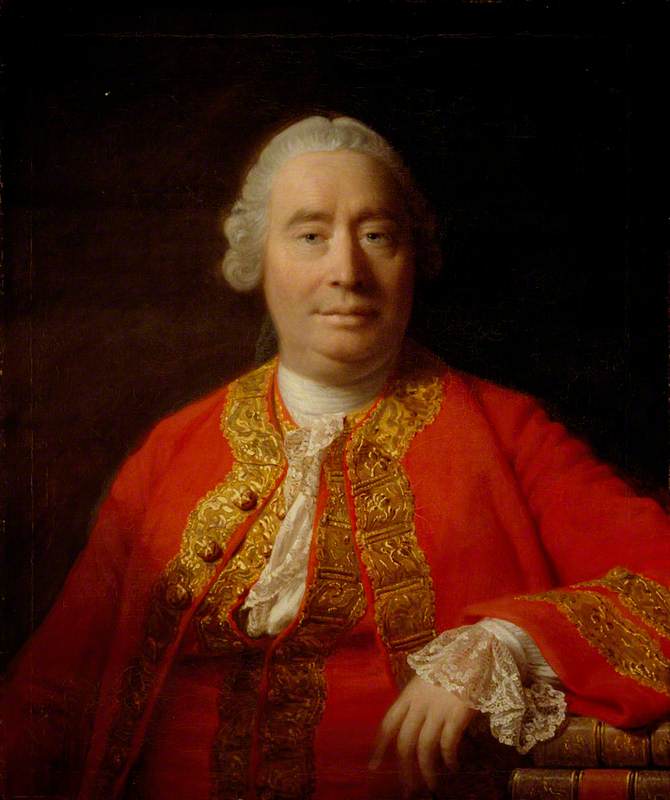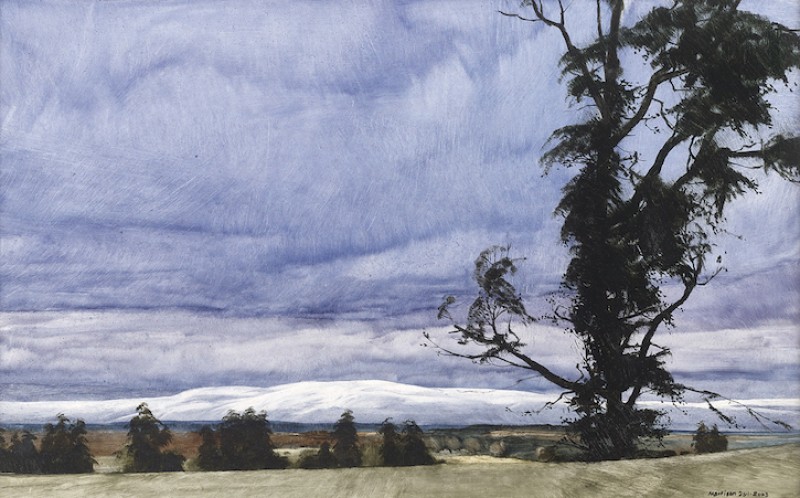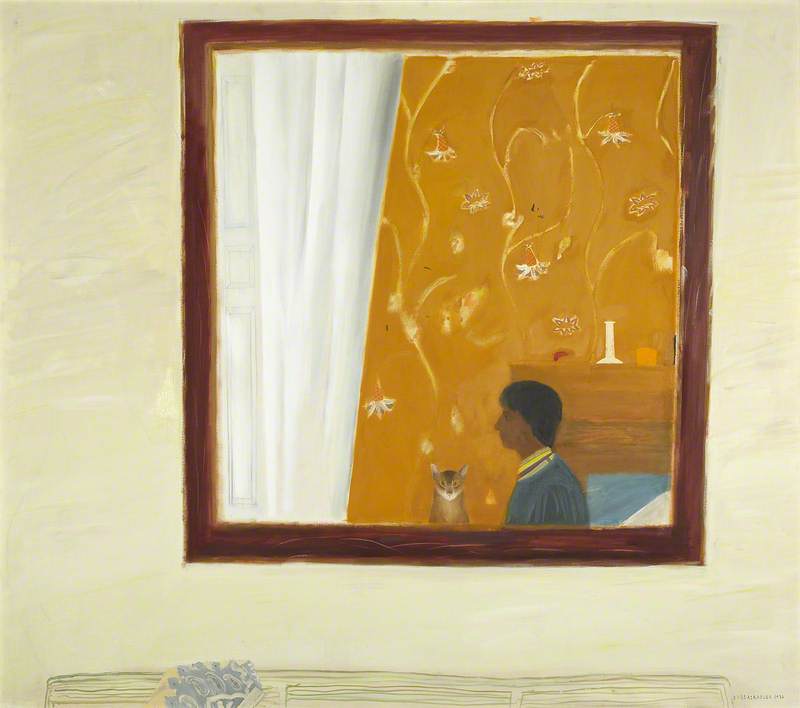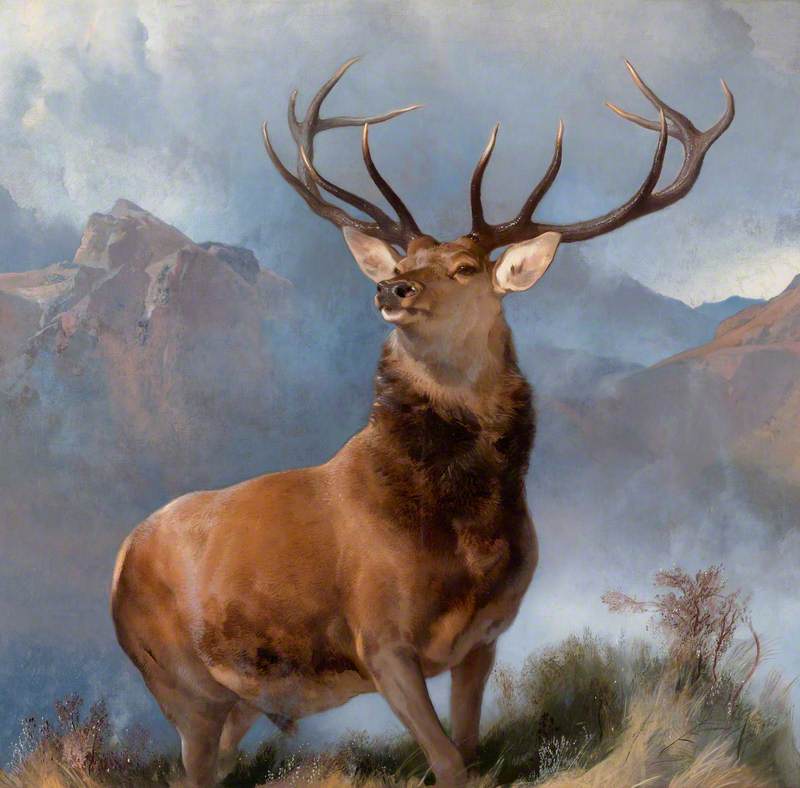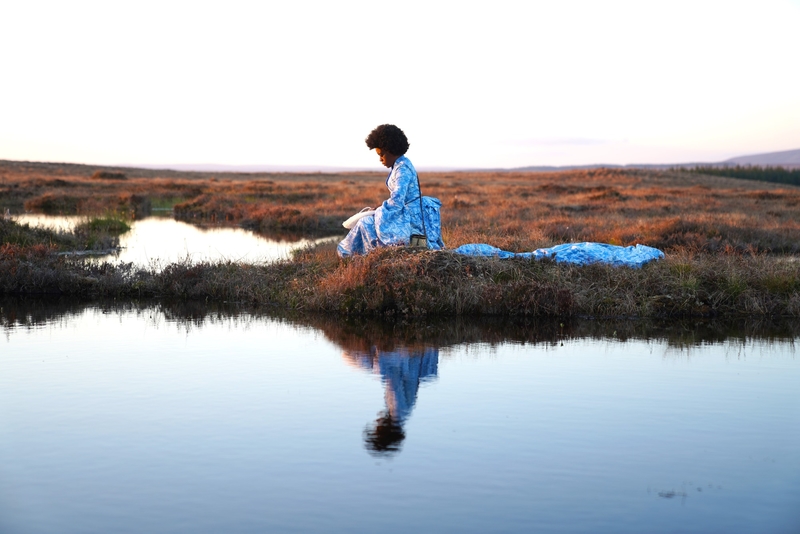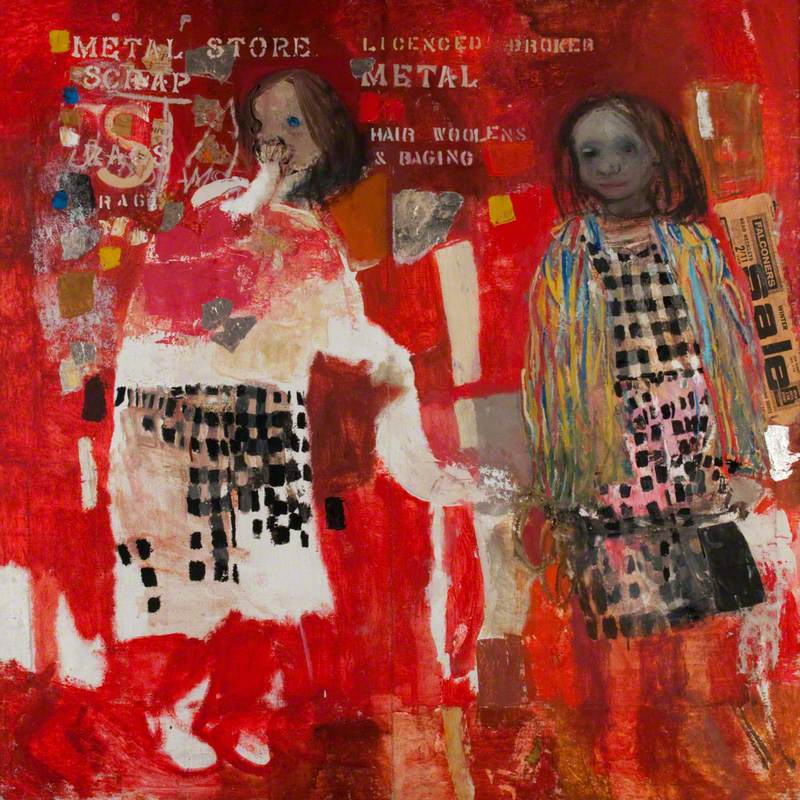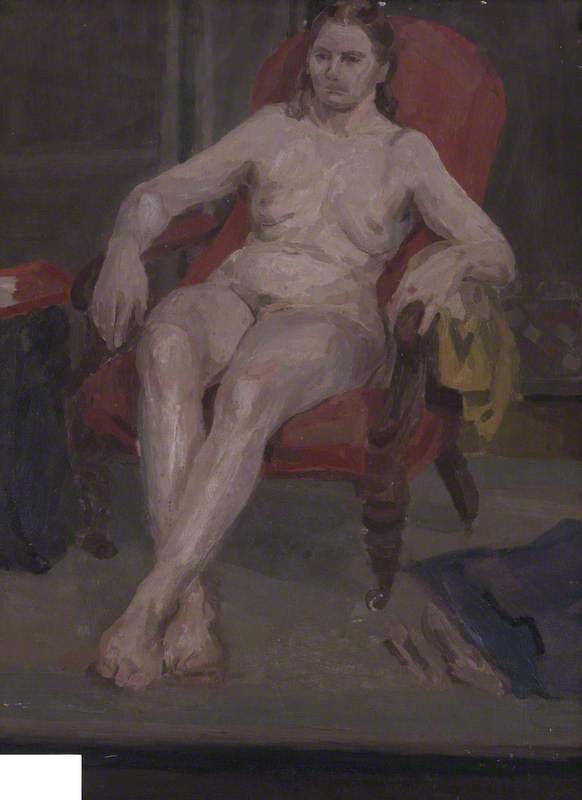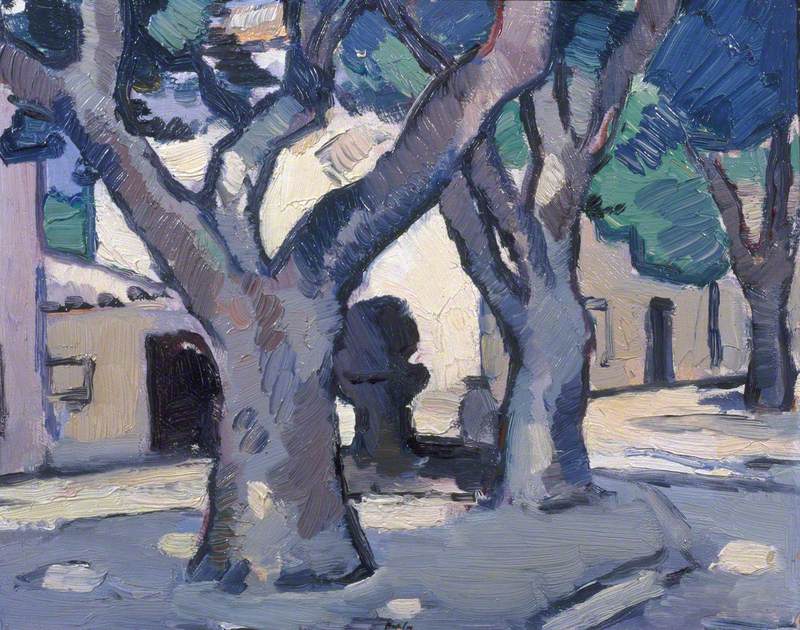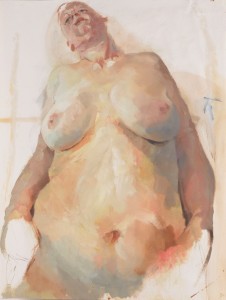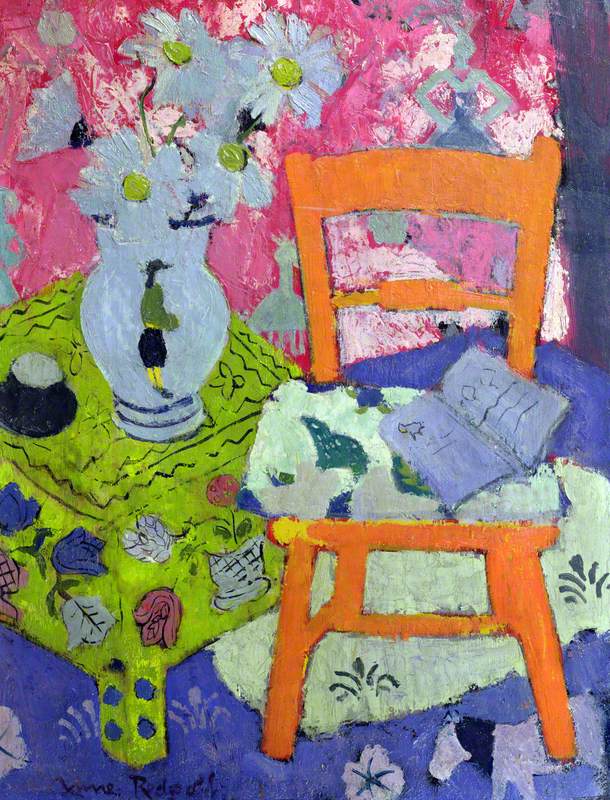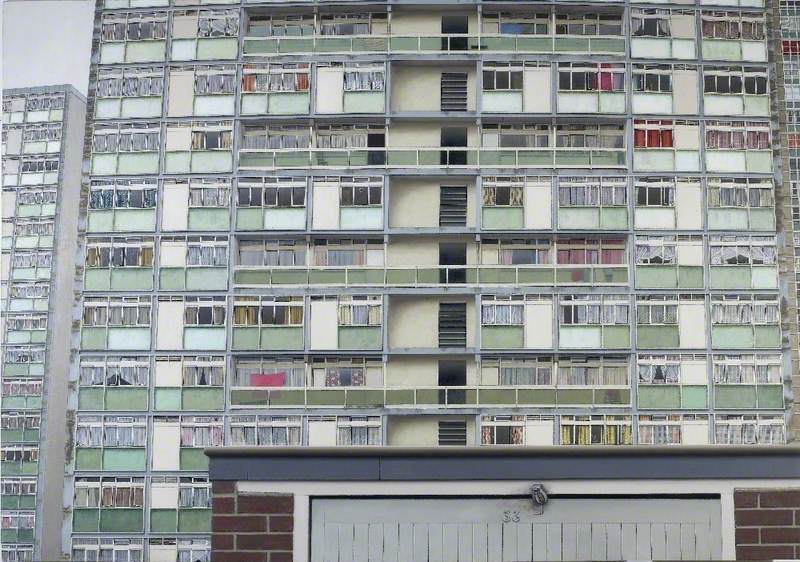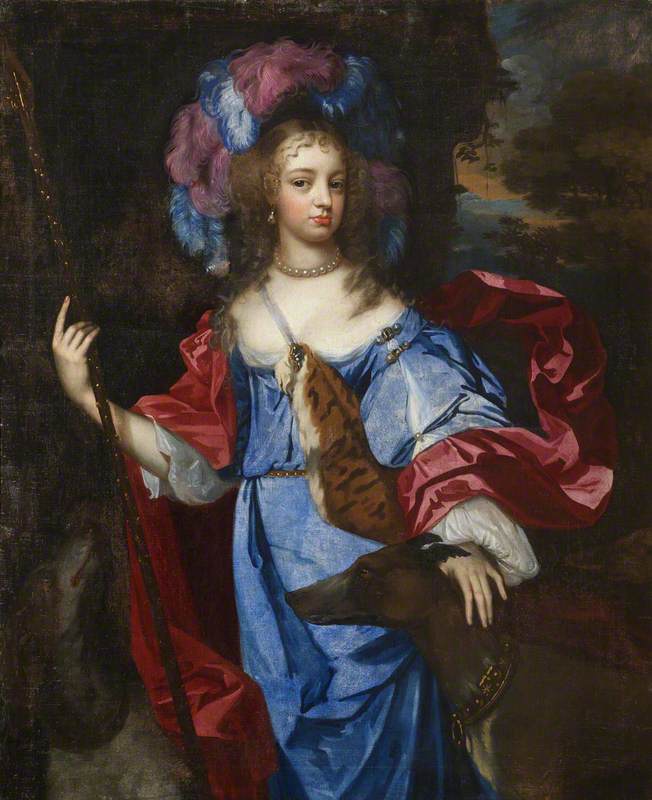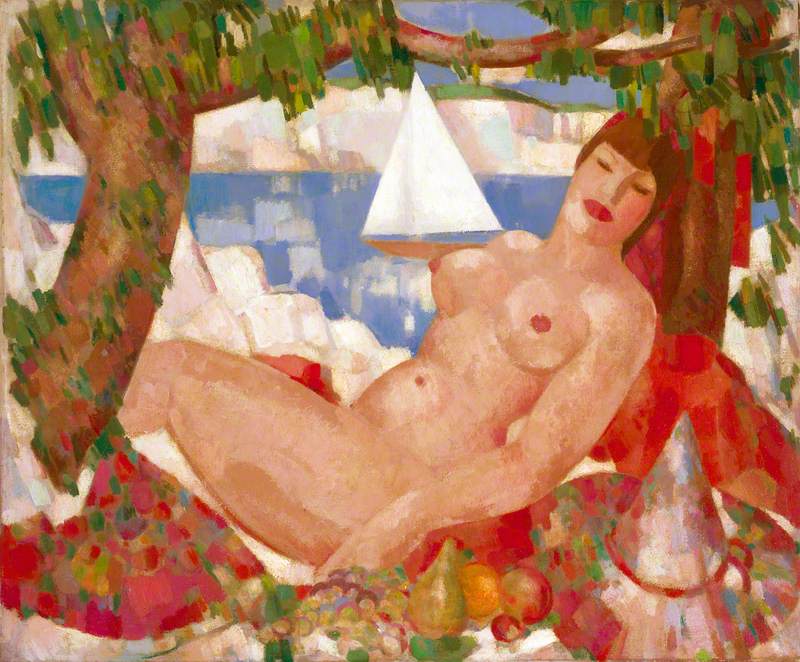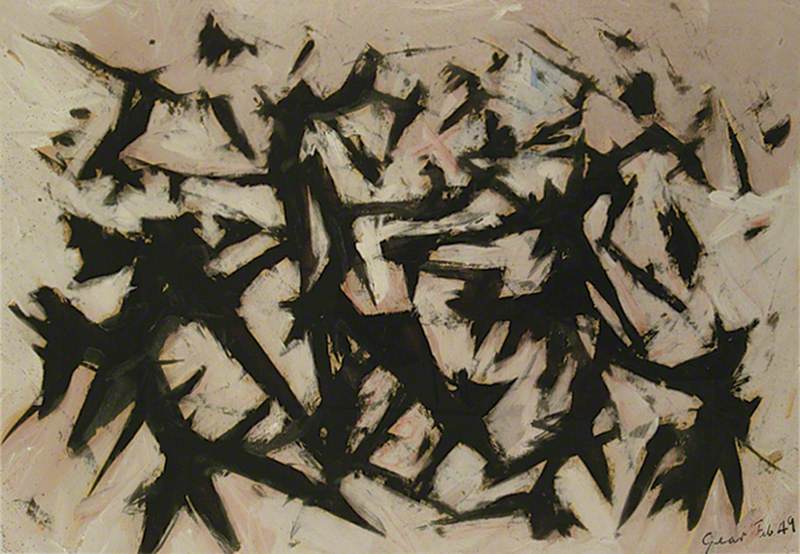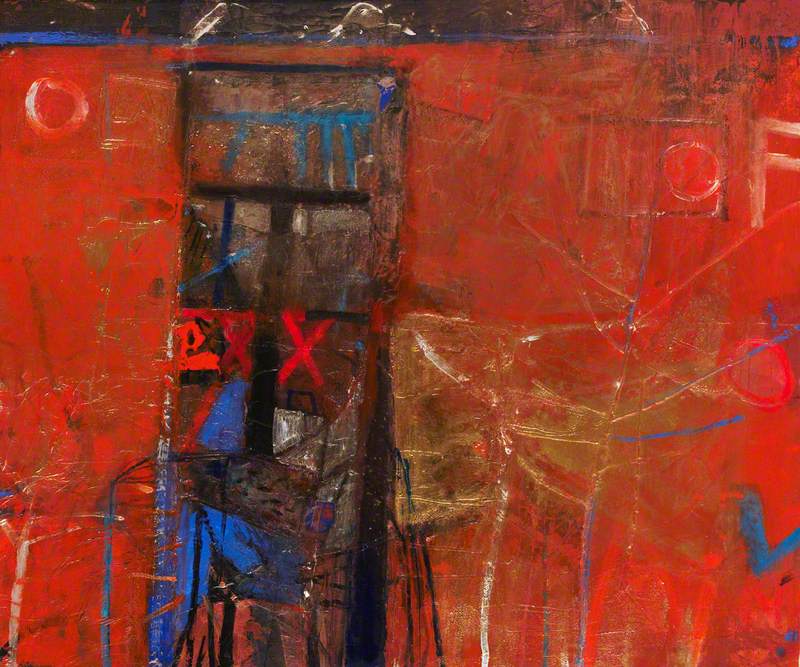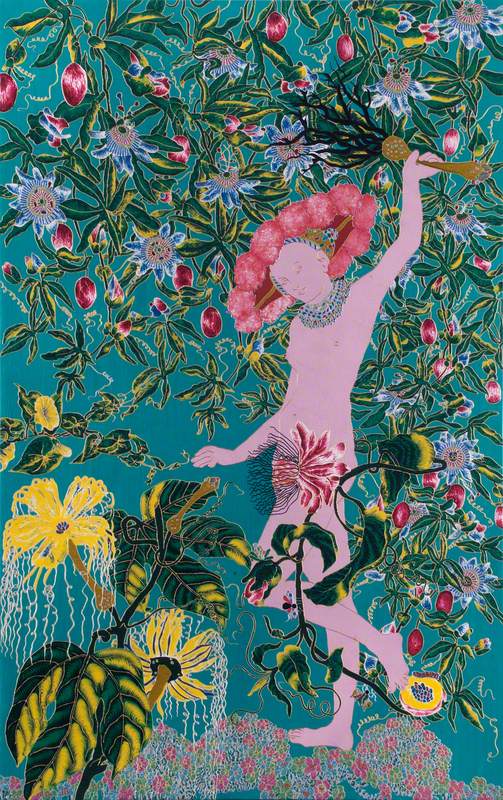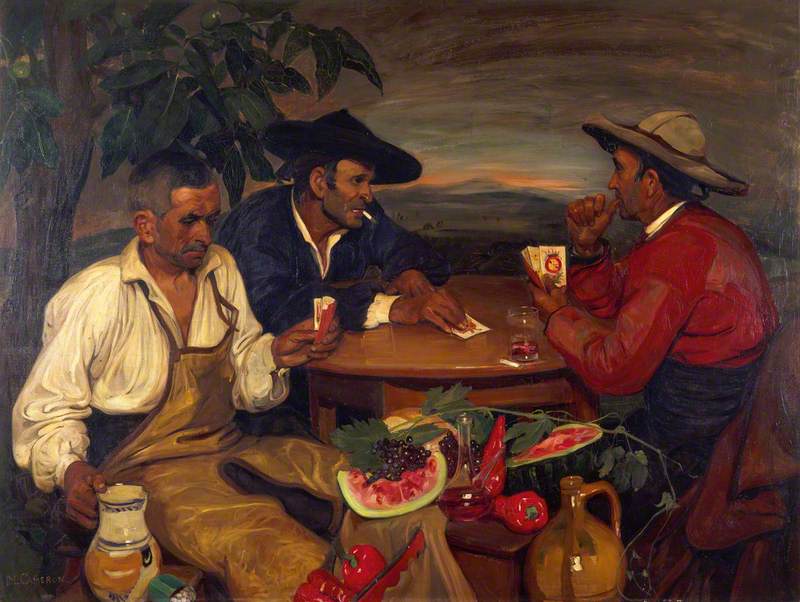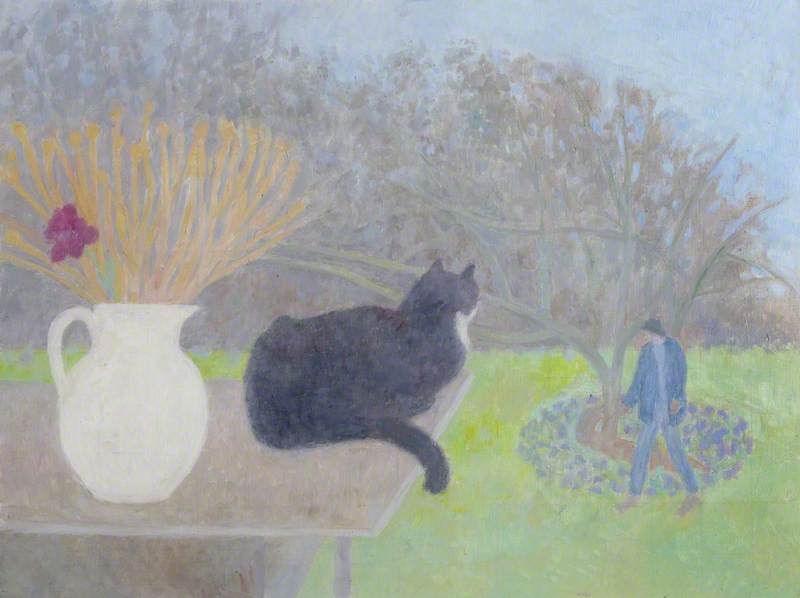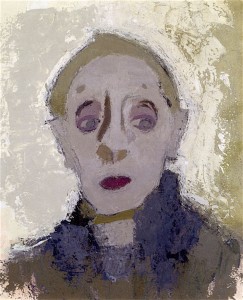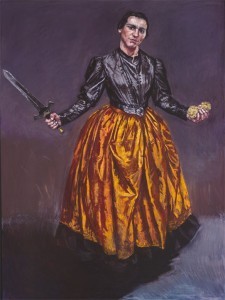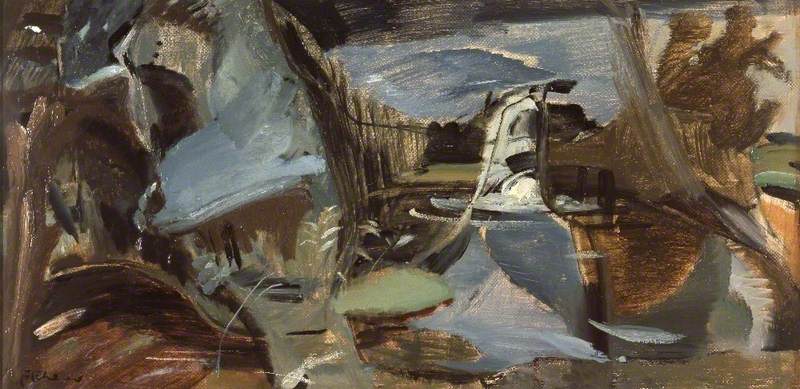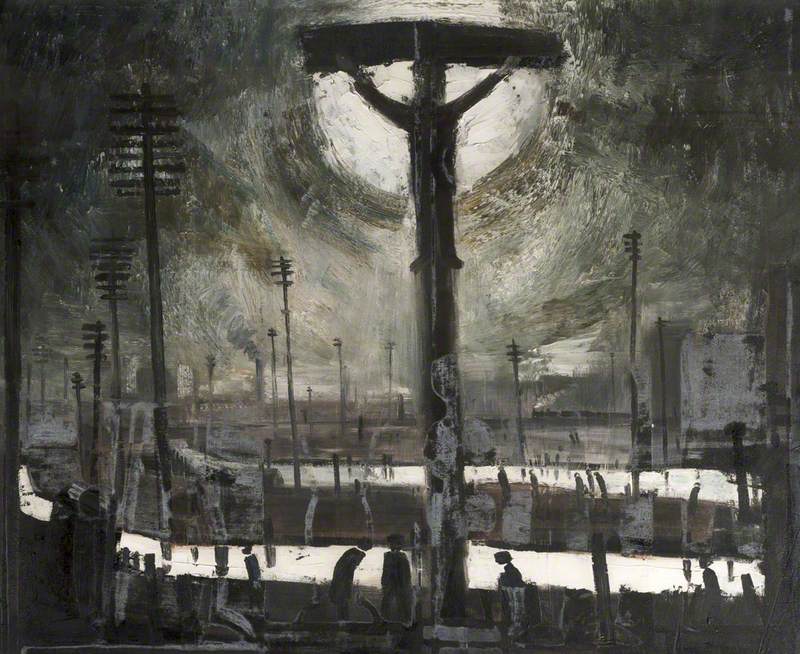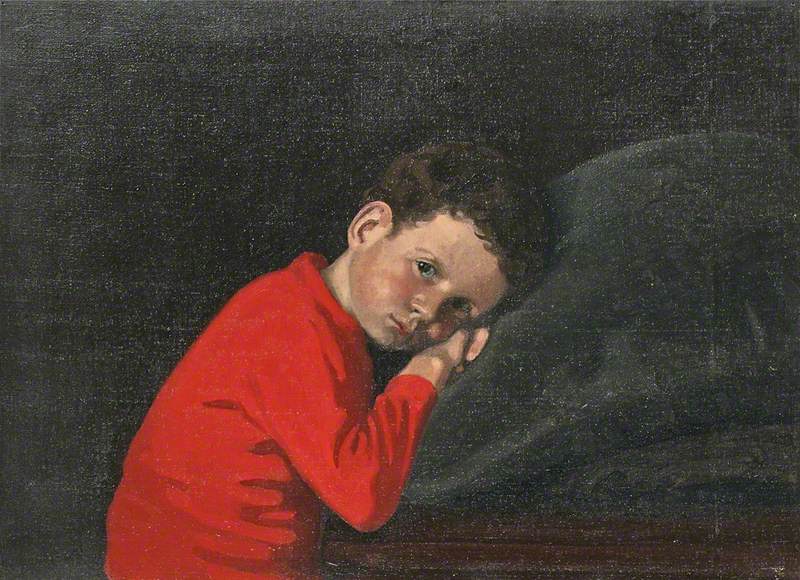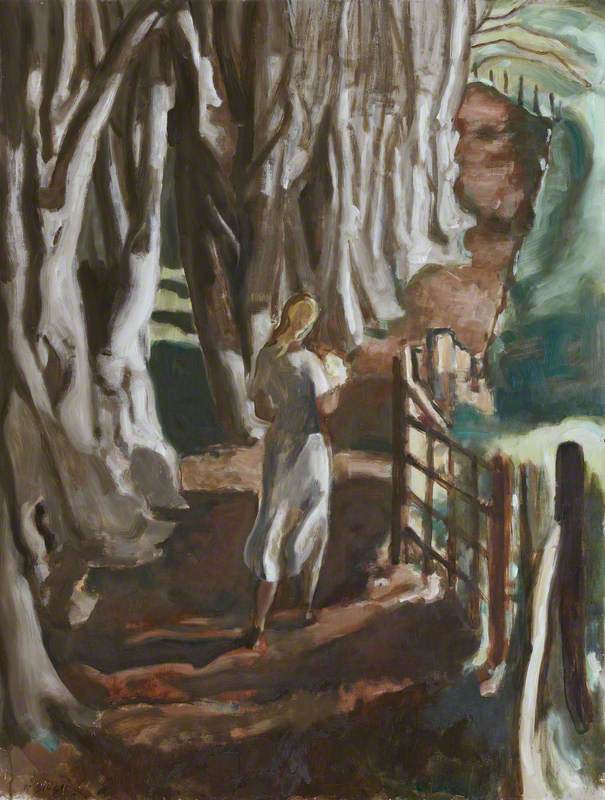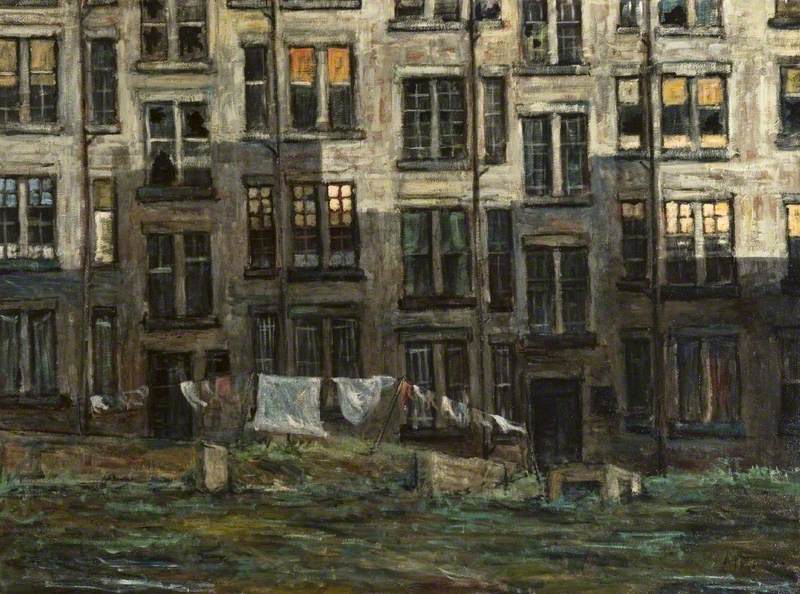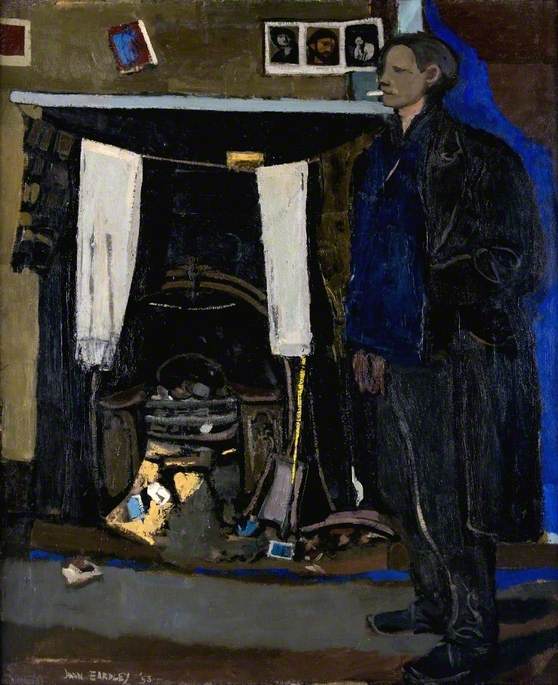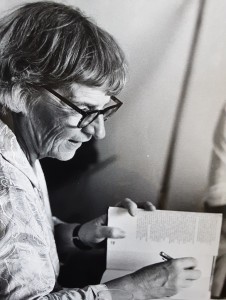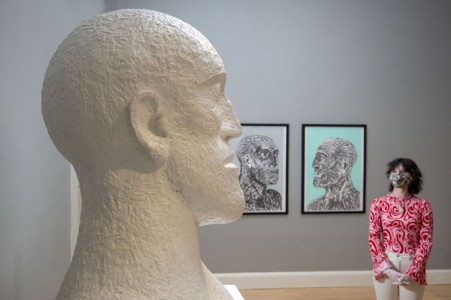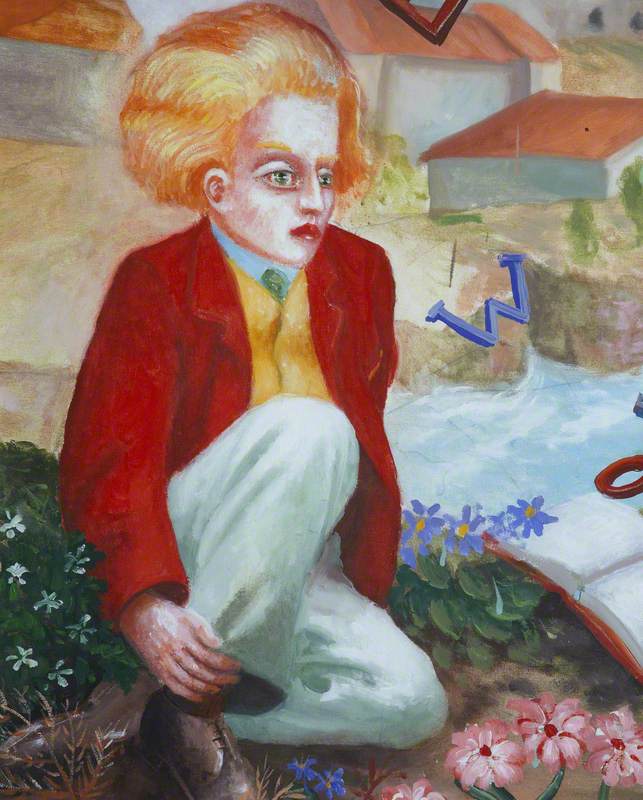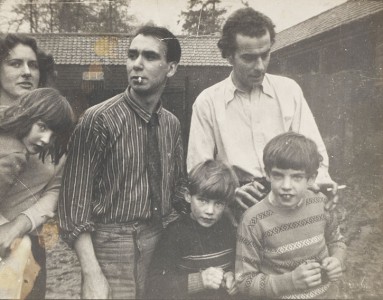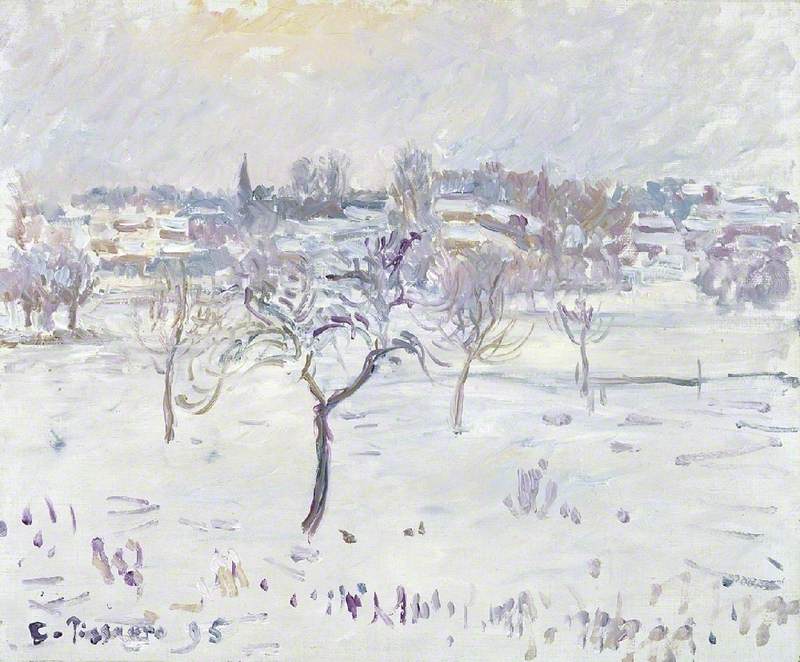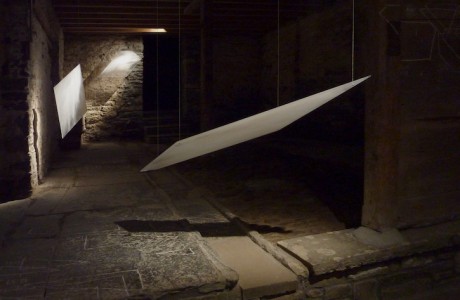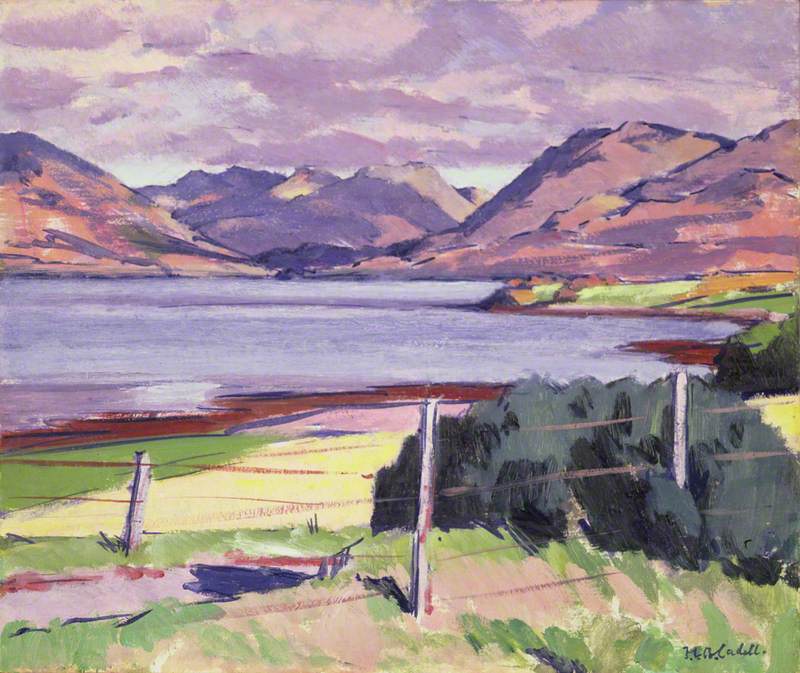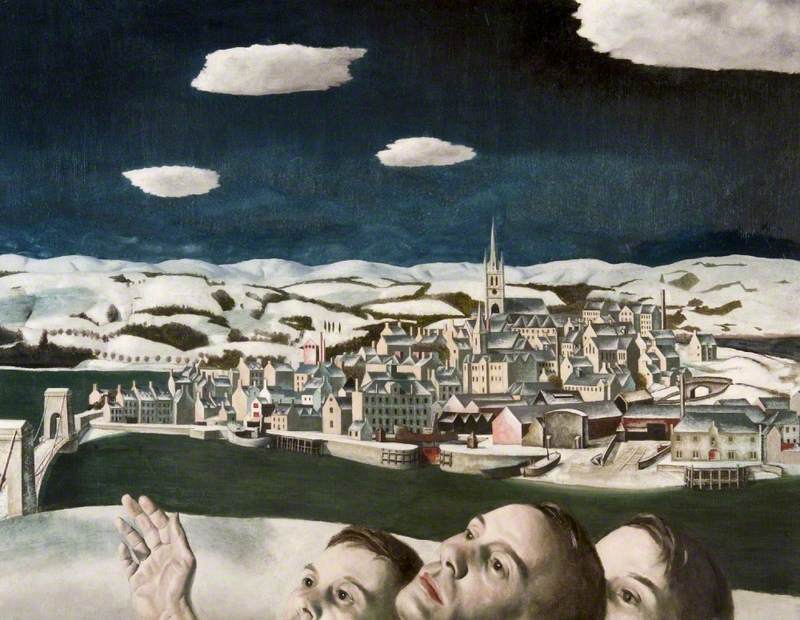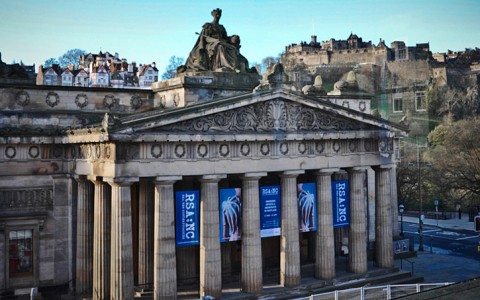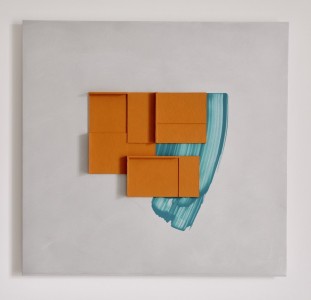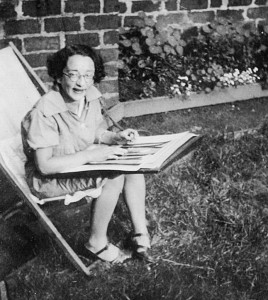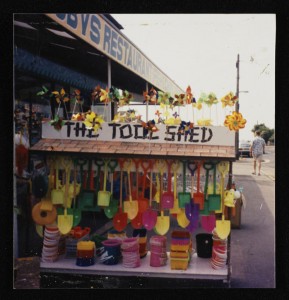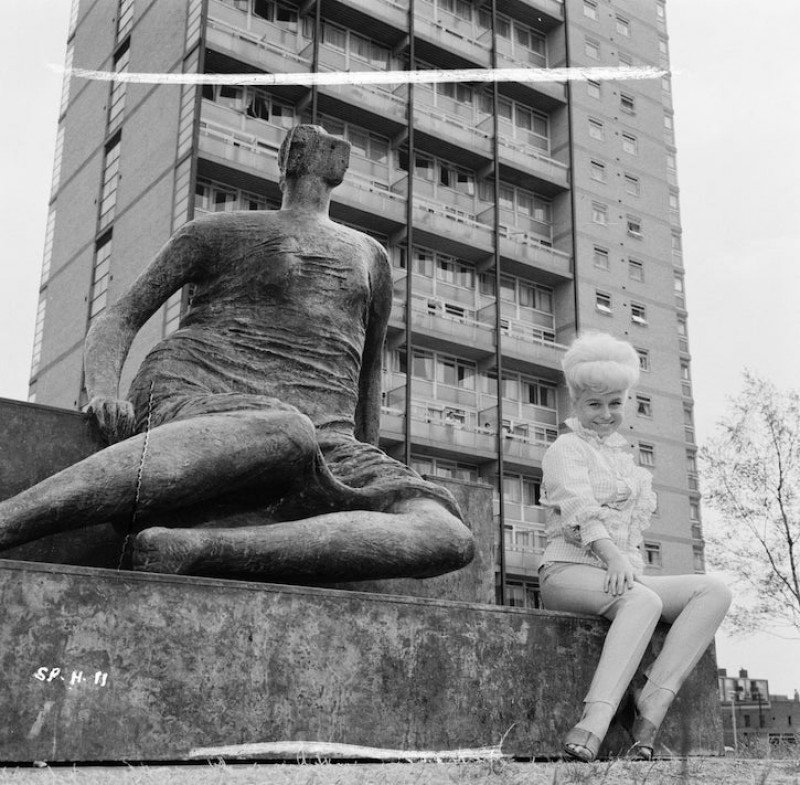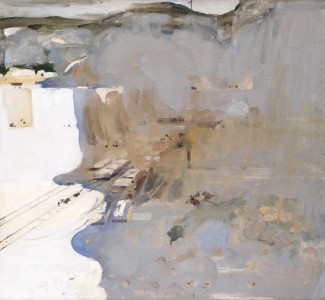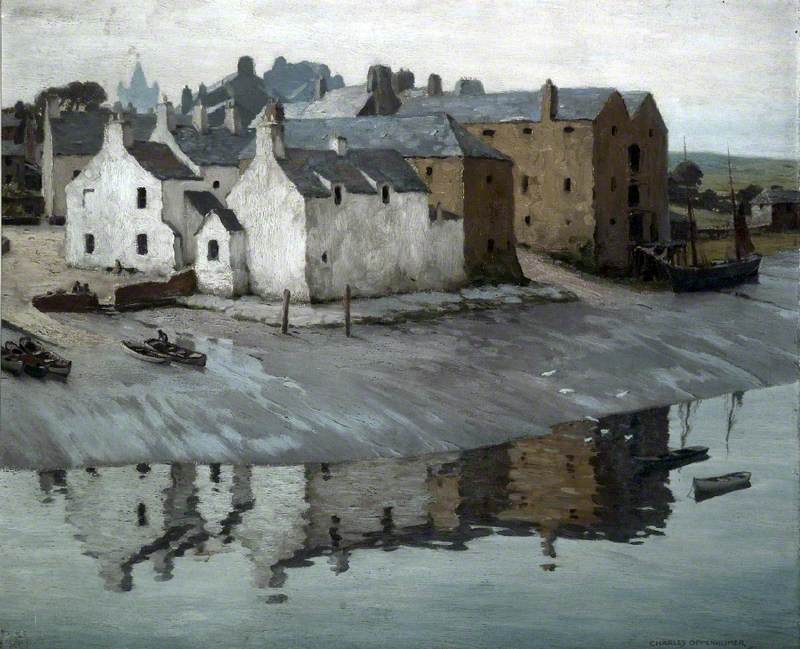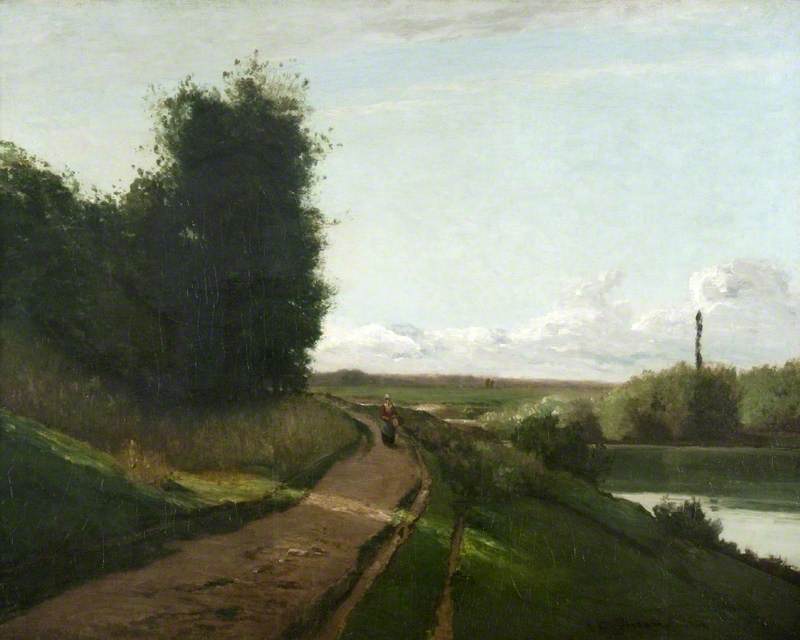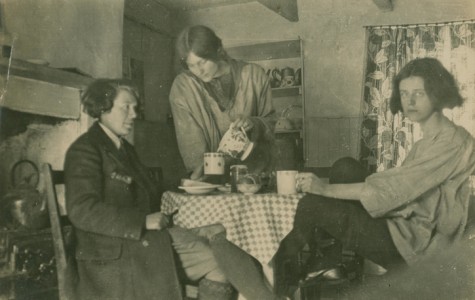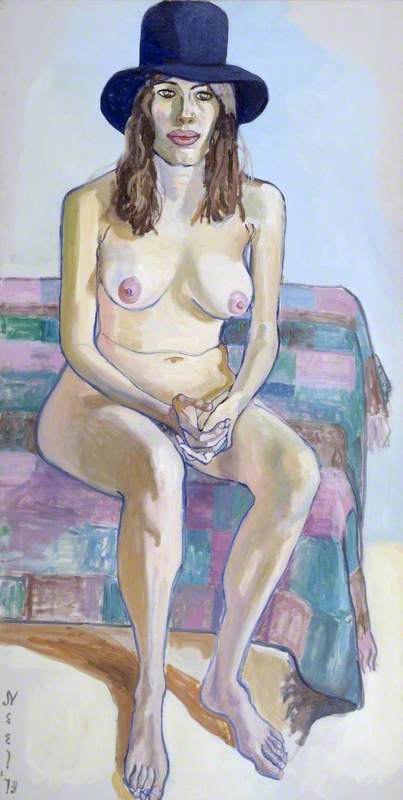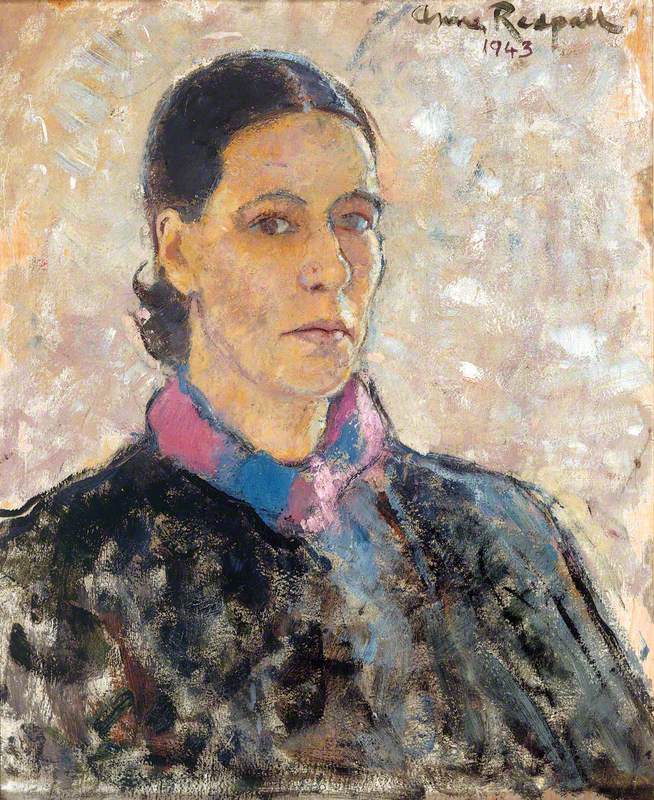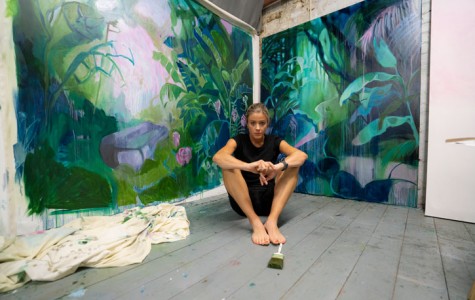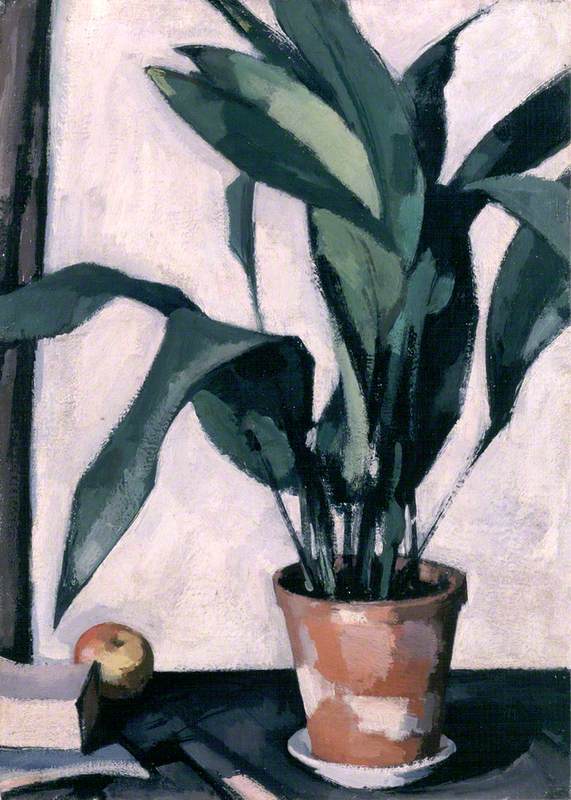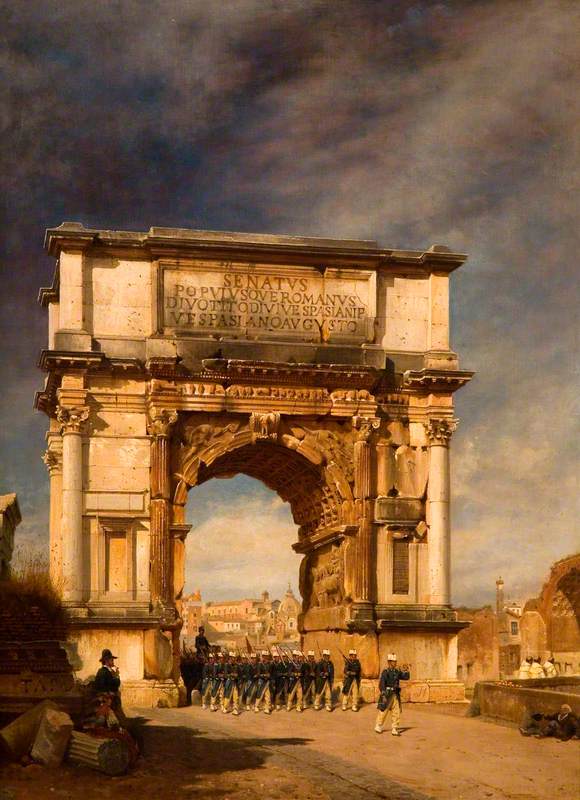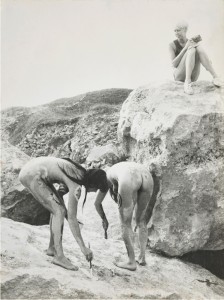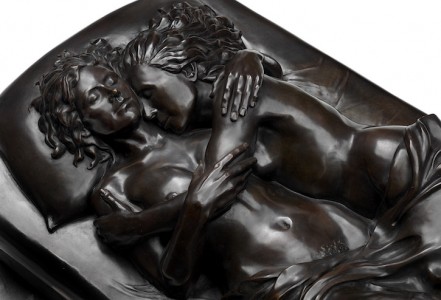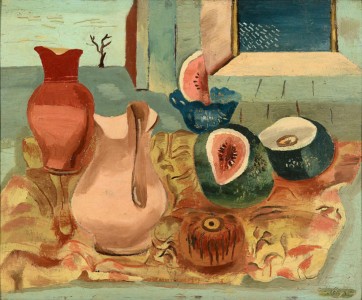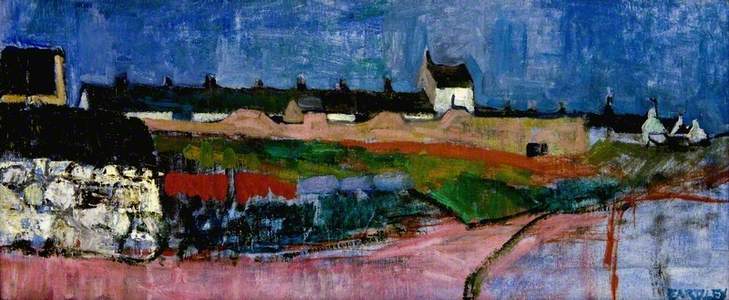At the Scottish National Gallery of Modern Art in Edinburgh, we receive more requests about Joan Eardley (1921–1963) than about any other artist. Our exhibition 'Joan Eardley: A Sense of Place', held at the Gallery in 2016, attracted over 40,000 visitors. More than 10,000 copies of the catalogue were sold.
Joan Eardley (1921–1963), Artist
1943
Joan Kathleen Harding Eardley (1921–1963) 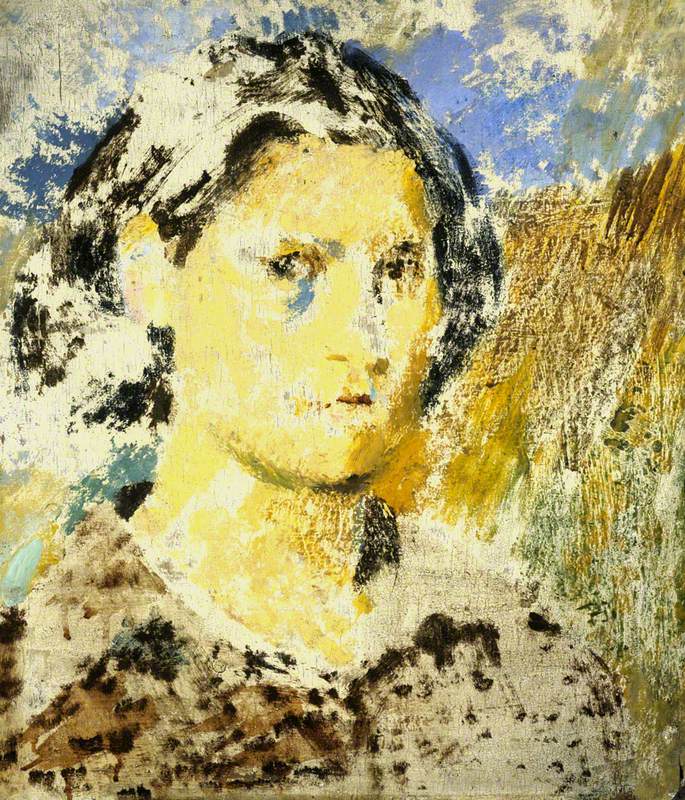
In a career which lasted barely fifteen years, she was hugely prolific, producing perhaps a thousand paintings and thousands of brisk little crayon sketches. The Glasgow children who sat for her would fold the discarded drawings into paper airplanes. Now these sketches fetch five-figure sums at auction.
Catterline Coastguard Cottages
c.1952
Joan Kathleen Harding Eardley (1921–1963) 
Eardley was born nearly a century ago, on 18th May 1921, on a dairy farm in Warnham, Sussex. The family later settled in London, but with war looming, in 1939 they moved to Scotland. Eardley enrolled at the Glasgow School of Art and in 1949 she staged a small exhibition there. It was reviewed in the Glasgow Herald and, by chance, an art teacher in Aberdeen read the review and invited Eardley to show in a gallery adjoining Aberdeen's Gaumont cinema.
While she was there, helping to hang the show, Eardley chanced upon Catterline, a fishing village of thirty or so cottages some twenty miles south, down Scotland's east coast. You wonder how her life would have turned out had the Herald's critic reviewed another show instead or had the art teacher skipped that page of the newspaper.
From then on, Eardley had two main subjects: the noisy, crowded, inner-city life of Townhead in central Glasgow, and the empty, rugged seascapes and fields of Catterline. The two places were not, at heart, so very different. Both places were home to tight-knit, resilient communities fighting hardship: one faced poverty, overcrowding and the council's bulldozers; the other depopulation and the changing nature of the fishing industry.
In Townhead, Eardley lived in a top-floor studio above a scrap-metal shop. The studio contained a bed, a stove, a sink, her painting gear and little else. The population density in Townhead was four times the average in Glasgow and the tenements were crumbling away. Buildings and shops were getting boarded up for demolition. But it suited her: 'I like the friendliness of the back streets. Life is at its most uninhibited here. Dilapidation is often more interesting to a painter as is anything that has been used and lived with.'
Her favourite subjects were the local children in their hand-me-down clothes, playing freely in the streets, whom she portrayed in an unstaged, unsentimental way.
When Eardley needed a change of scene, she journeyed 130 miles northeast to Catterline. At first, she made use of a friend's cottage, the old customs watch-house, perched on its own above the bay at the very north of the village. Her early Catterline paintings are strikingly similar in style and colour (orange and blue predominate) to her Townhead pictures. Intriguingly, in her first years in the village, she did not paint the sea. She was just yards from it, but she chose to paint the cottages instead. It was only from the mid-1950s that she took on the sea and the beach where the salmon nets were hung out to dry and mend.
From 1954 she rented a cottage at No.1 South Row. The most southerly cottage in the village, it can be seen at the extreme left of the row of houses in what is perhaps her best-known painting, Catterline in Winter, 1963. No.1 was even more primitive than her Townhead studio. A two-room dwelling, it had no electricity or running water – water was pumped from a well on the slope outside the house and kept in a bucket. It had a bare earth floor, no ceiling (a trained joiner, she fixed the leaking roof and fashioned a ceiling out of old paintings, nailed together) and a chemical toilet in a shed behind. Exposed to gales from the North Sea, the front door had no letterbox: the wind would have blown it open all the time.
Yet she described it as 'the absolutest best and most beautiful spot in the village'. It was so primitive that it was declared unfit for habitation and at one point the whole row was earmarked for demolition. Happily, the decision was reversed. Early in 1963, she bought the cottage for £35.
Many of Eardley's paintings of fields were done just behind or next to the house. For example, A Field of Oats shows her cottage, viewed from the south, end on, so you are seeing the gable end, from a low vantage point.
Snow is painted from the back garden just behind her cottage, looking north towards the Mains of Catterline farmstead. She must be standing right next to her outdoor toilet. She wrote to a friend in a state of excitement when she had a little window fitted in the door: 'It's got a WINDOW and it's going to have a curtain, so as those folks what is shy can pull that wee lace curtain – and feel right soft and cosy.'
Another group of paintings, such as Winter Sea IV, are done virtually from the front doorstep at No.1, looking north, over the bay and the pier. You can even see her first house, the watch-house, the northernmost cottage in the village, high on the clifftop.
Almost all her motifs were found within a few minutes' walk of her cottage. You can map them quite precisely and say exactly where she put her easel – something we did in the catalogue of the 'Sense of Place' exhibition.
Like Monet, she worked in series, painting the same motif, but in different conditions. Because the light and weather changed so much, and the crops and seasons changed, nothing stayed the same. There was no need to go any further afield. She would have several paintings on the go at any one time: if it rained suddenly, or the sun appeared, or the wind died down, she always had another painting to go back to.
She loved stormy weather. She would head down to the beach, lash her hardboard (never canvas, which flew away too easily) down with ropes and G-clamps and even used an anchor. She would ferry her materials about the village in a large pram.
The locals – mainly fishermen and their families – were a tight-knit community, but they admired her work ethic and tough character so she was quickly accepted as a villager.
In Catterline, she never included human figures. Or at least that's what we thought. On seeing Boats on the Shore in our Eardley exhibition in 2016, a visitor who had grown up in Catterline nonchalantly pointed to a yellow blob in the middle and said 'That's John Watt. Those are his yellow waterproofs.' It was obvious once you knew it. The painting had been in the Gallery's collection for nearly fifty years, but it seems nobody had noticed this before. Our visitor could also name each of the three boats (Eardley never drew them or anything generically: they are always specific) and say who crewed them and how the lights, dangling from vertical poles, worked. Eardley's paintings are always based on close, accurate observation.
Although geographically removed from the art world, Eardley took a keen interest in contemporary art and literature. She read Simone de Beauvoir, Camus and Sartre, and she admired Jackson Pollock, Nicolas de Staël and the French abstractionists known as the Tachists. This is clear from her later work.
From the late 1950s, she used bigger brushes and applied the paint more broadly and with more freedom and speed. She often mixed the paints herself to get a runny consistency and painted from big tin cans. She left drips, scratches and clamp marks as part of the pictorial effect. Her work combines the freedom and energy of abstraction, locked into a figurative framework. It speaks of pure emotional force balanced with close observation and lived experience.
She also began to use collage, sticking sweet wrappers and bits of comics and newspapers onto her paintings of Glasgow children, mimicking advertising hoardings. In Catterline, she stuck grasses and sand onto her pictures.
Eardley was not undiscovered or neglected. She had successful shows in Edinburgh and London, and when you could buy a cottage in Catterline for under £50, her paintings were selling for £200 apiece. She was elected a member of the Royal Scottish Academy. The BBC filmed her for television (she tried to wriggle out of it telling a friend 'I can't even think of one interesting story about myself'). Glasgow Museums and the National Galleries of Scotland bought her work.
But it all ended with sudden tragedy. Early in 1963, she felt unwell. She put off visiting the doctor. When she did so the diagnosis was breast cancer and it had spread too far. She died in August, aged 42. Her family scattered her ashes on the beach at Catterline, the subject of so many of her pictures.
Patrick Elliott, Chief Curator at the Scottish National Gallery of Modern Art, Edinburgh
Joan Eardley: A Sense of Place, the catalogue of an exhibition held at the Scottish National Gallery of Modern Art in 2016, is available from the National Galleries of Scotland
